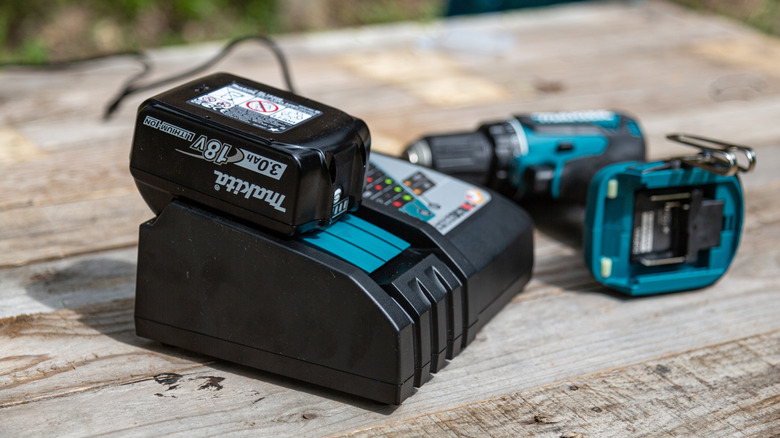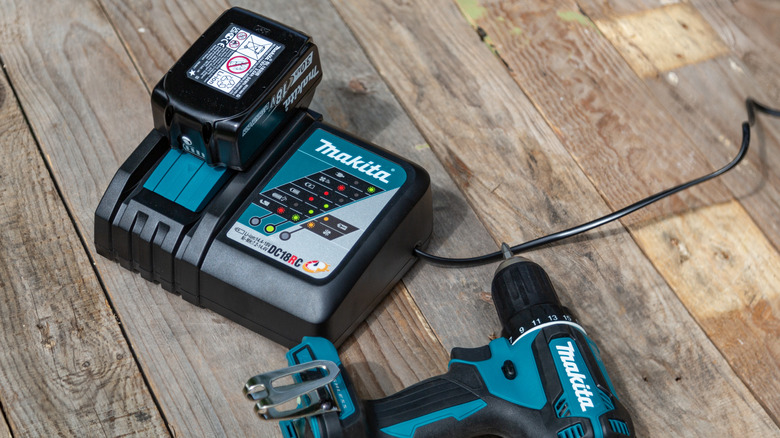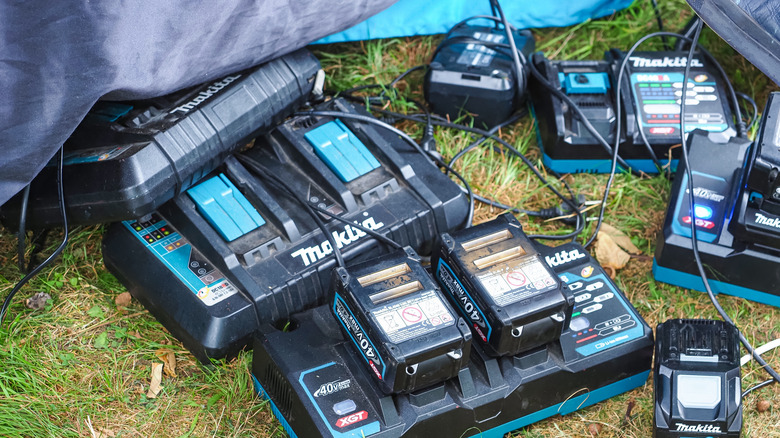
At the heart of many cordless power tools portfolios, like those manufactured by Makita, are its battery systems. In the United States, there are several types of Makita batteries that you can find at your local hardware store or through online retailers, such as the 40V XGT, 18V LXT, 12V CXT, and ConnectX battery packs. Due to their popularity, there have even been a rise of fake Makita batteries flooding the market, wherein bad actors are trying to get a piece of its strong branding that is known
for quality.
If you're lucky enough to own Makita power tools and have your own official batteries lying around, you may have had that dreaded moment wherein you realized you have left it charging overnight. So, should you be worried? Previously, we've talked about how Makita has a few patented technologies that make its products unique, including Active 3 Controls. Designed to help manage the transfer of power in its charging system, it's a special chip what essentially makes it safe to leave your Makita batteries plugged into the charger without damaging its internal components.
Apart from this, Makita claims that it's also the reason it doesn't take the whole day for its batteries to charge completely. With this, you can breathe easy if you ever forget to unplug your Makita batteries after a long day of working at your job site. But if your Makita battery doesn't seem to be working the way it used to, what else could be causing it?
Read more: 12 Ryobi Tools Even Haters Of The Brand Will Love
How To Know When Something Is Wrong With Your Makita Battery System

Before you jump to conclusions, you may want to check if the issue is really with your Makita battery or the actual power tool. In the past, we've mentioned that there's actually a ton of third-party power tools that can function with Makita batteries. However, the catch is that they might not work as well, such as intermittently stopping while in use or not generate enough power to perform the necessary task. Although, it's also possible that even an authentic Makita tool could be broken. In addition, it's important to note that Makita batteries aren't immune to the issues that all lithium-ion batteries experience, including degradation. After years of use, all lithium-ion batteries will eventually be able to hold increasingly less charge.
If you are using your battery on authentic Makita power tools, but you've still seen a steep decline in battery capacity, you may want to look at the charging lights when it's hooked up to your official charger. For example, if you start seeing Christmas-colored red and green lights flashing, it's usually a sign that there's something wrong with the battery. In this case, you may want to take it out of the charger to avoid any safety risks and bring it to your nearest Makita service center. On the other hand, if your Makita battery doesn't charge at all, it could be due to temperature (too hot or too cold), blocked vents, or problems with the terminal.
How To Take Care Of Your Makita Battery Charging System

To keep your Makita battery healthy, there are still a lot of things you can do to get the most out of its lifespan. As with all battery systems, there are three main things to consider when it comes to care: usage, charging, and storage. In general, it's best to make sure that you avoid using your Makita batteries on third-party chargers. While it can work up to a certain point, it's important to know that these devices are not optimized for each other, which means it can affect the long term functionality. Not to mention, it could invalidate the warranty because Makita is strict about using its batteries with counterfeit tools, including chargers. In its Safety Data Sheet [PDF], Makita also cautions against disassembling and exposing it to heat more than 140 degrees Fahrenheit.
In its Battery Care Guide, Makita shares a lot of useful tips and tricks for storing your battery, such as not charging a hot or full battery and making sure it doesn't become fully empty. Plus, even when it's not getting any action, Makita recommends still giving the battery a plug every half a year to maintain its health. Makita also has some unique advice, which includes not letting its battery terminals touch metal objects. And of course, it's important to monitor and protect the health of your Makita charger as well by not exposing it to the elements unnecessarily, including moisture and heat. Besides battery care, there are also four Makita tools you should avoid.
Want the latest in tech and auto trends? Subscribe to our free newsletter for the latest headlines, expert guides, and how-to tips, one email at a time.
Read the original article on SlashGear.










